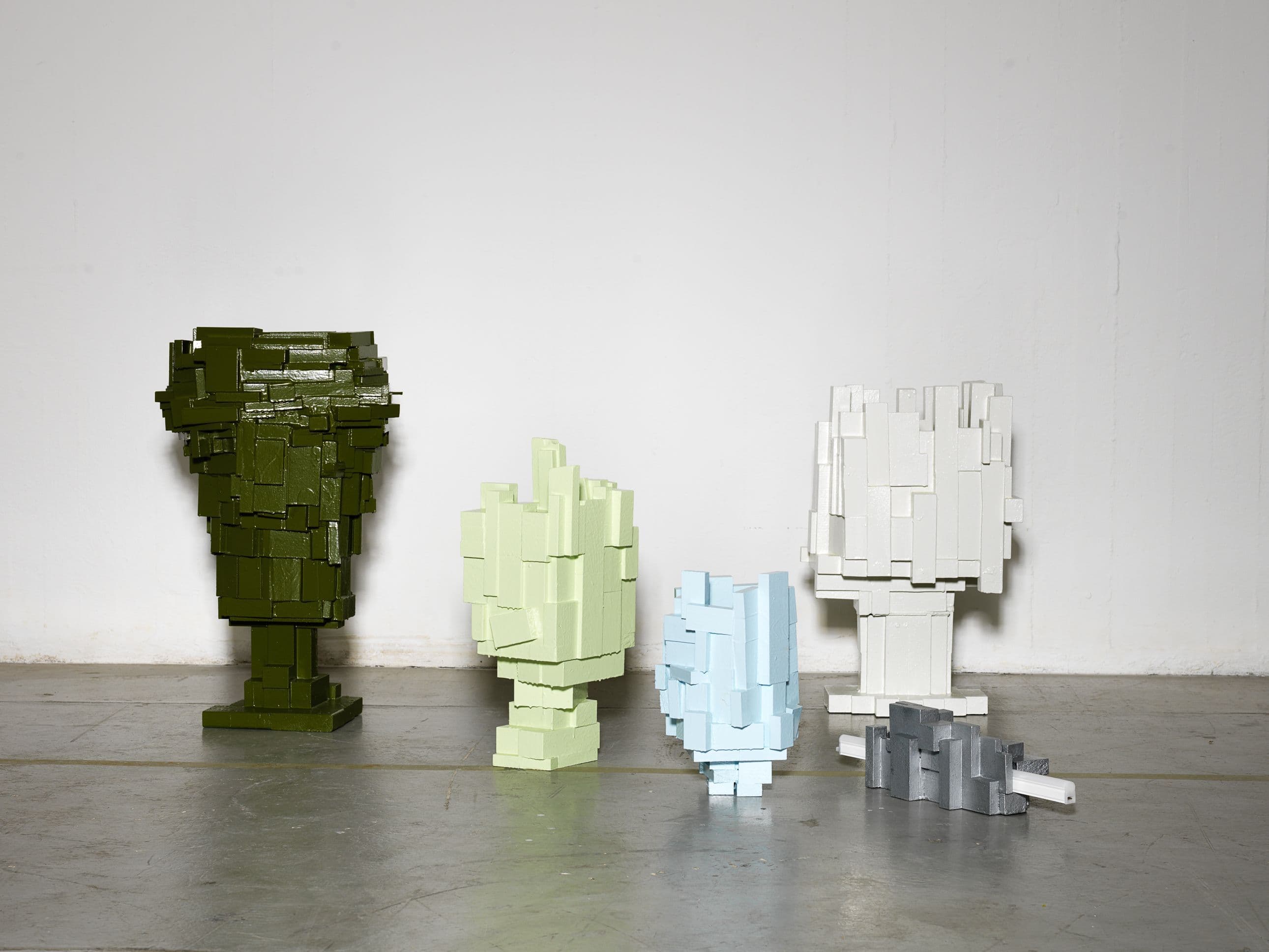1. You worked exclusively with discarded wood for this commission. How did the variability of the reclaimed material influence your construction process and overall form language?
Like in any Craft Punk project, the reclaimed wood was central to both the planning and the sculptural expression. Having previously created nearly 30 Craft Punk pieces, I knew which parts of the process required structure and which allowed for spontaneity. Craft Punk is always about balancing solid construction with intuitive form-making—whether it’s a 35 cm vase or a 3-meter sculpture.
For this commission, I had time to source materials in advance, providing a clearer sense of what I’d be working with: around 20–30 six-meter studs left over from renovations by the property owner, Mileway, in the large industrial building where my studio is located, along with two pallets of offcuts from Fogia and Dinesen. This foresight enabled me to create almost realistic technical sketches, showing the basic structure and visual direction. These were reviewed with the client early on.
After their approval, I focused on building a heavy, stable base suitable for pallet transport. With that foundation set, I kept the sketches nearby as a reference while moving into a more physical and intuitive improvisation phase—allowing the sculpture to grow into a form that still aligned visually with what had been approved.
Since reclaimed material inevitably introduces irregularities, I made sure the client understood that Craft Punk is about letting those imperfections guide the final shape. Every object becomes unique as a result of letting the wood pieces guide the process—together with the hand, its presence, and intelligence, shaping the form in constant dialogue with the material.
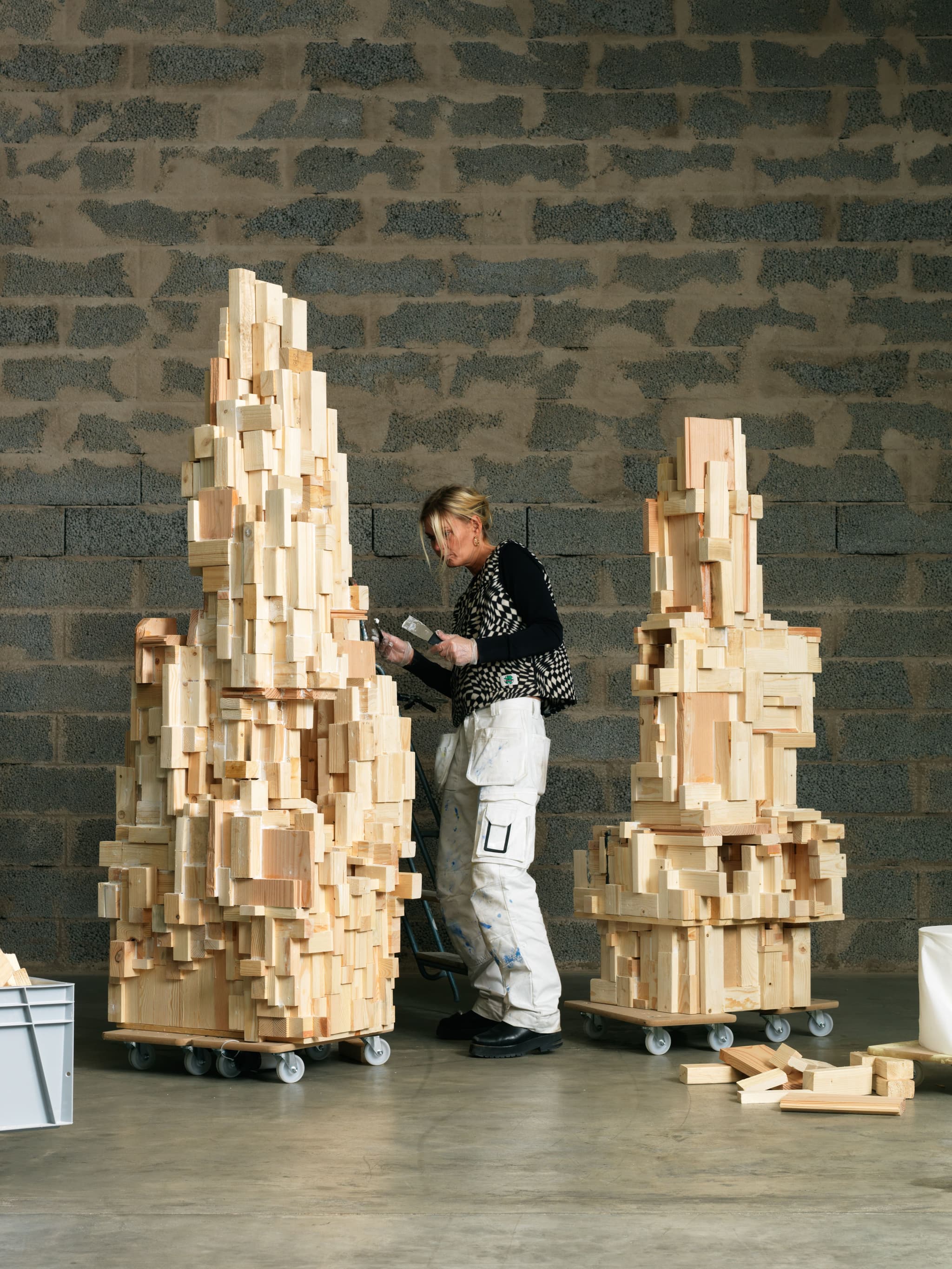
2. The sculptures are built entirely by hand. What techniques did you develop or adapt to process and assemble irregular wood waste at this scale?
It’s hard to describe something so intuitive, but if I had to explain my Craft Punk method, I’d call it a kind of irregular Tetris—where each unique piece of wood acts like a brick in a masonry wall, except the “bricks” vary in size, grain, and thickness, and I’m sculpting rather than stacking flat walls.
One of the biggest challenges for this commission was the scale. The sculpture was taller than the ceiling in my studio, so I had to speak with Mileway to see if there was a space available with at least six meters of ceiling height. Luckily, they had a room I could rent where I could build and spray-paint the work at full scale.
Another major challenge was ensuring the sculpture’s stability and safety without compromising its expressive, visual language. I use very basic, low-tech carpentry tools—saws, clamps, screws, glue, sealers, and a screwdriver—and adapt my assembly techniques based on the shape I’m working on.
This technique evolved during my 2023 solo exhibition Crafted Potential, which functioned as a kind of hands-on research lab. There, I explored how industrial wood waste could be reintroduced into furniture production through material- and craft-led processes. That project laid the foundation for what became Craft Punk—a method that merges improvisation and construction, aiming to give discarded materials a new kind of value through form.

3. How did your collaboration with Dinesen and other local material sources shape the aesthetic or structural properties of the finished pieces?
All the wood used in the project was sourced locally. I reached out to Dinesen and had a pallet left from a previous collaboration with Fogia Collection. Even the long structural studs were reclaimed from renovations in the giant building where I have my studio, with the support of the property owner.
The various reclaimed wooden materials shaped the sculptures in a very literal way. The aesthetic language of Craft Punk always evolves directly from what is available. For the sculptures, I used denser hardwoods to form a solid base in the lower sections for weight and stability, while lighter woods helped build a hollow volume higher up.
4. What material treatments, if any, were applied prior to spray painting to stabilize or standardize the surfaces of the assembled structures?
Each piece was treated with a fire retardant solution, which had to fully dry over a couple of days before I moved on to painting. I used water-based wood spray paint to achieve the final color finish, followed by a clear high-gloss water-based lacquer for protection and durability. These treatments helped unify the surfaces despite their diverse origins and textures. They also ensured the sculptures would be safe in an indoor public space and resistant to wear over time.

5. What systems or frameworks do you use to catalogue or classify the individual wood components before integrating them into the final works?
I don’t have a formal cataloging system. Instead, I rely on tactile memory and visual intuition. Over time, I’ve noticed a preference for softer woods like pine and spruce because they’re easier to work with—lighter, more pliable, and easier to screw into. When I receive a pile of offcuts, I sort loosely by size or usability: anchor pieces, filler pieces, expressive pieces. But mostly, I let the material guide me.
I often compare my process to working with clay—except here, the "clay" is a rigid, preformed, discarded material with its own history. I trust my hands to shape it into something that makes sense.
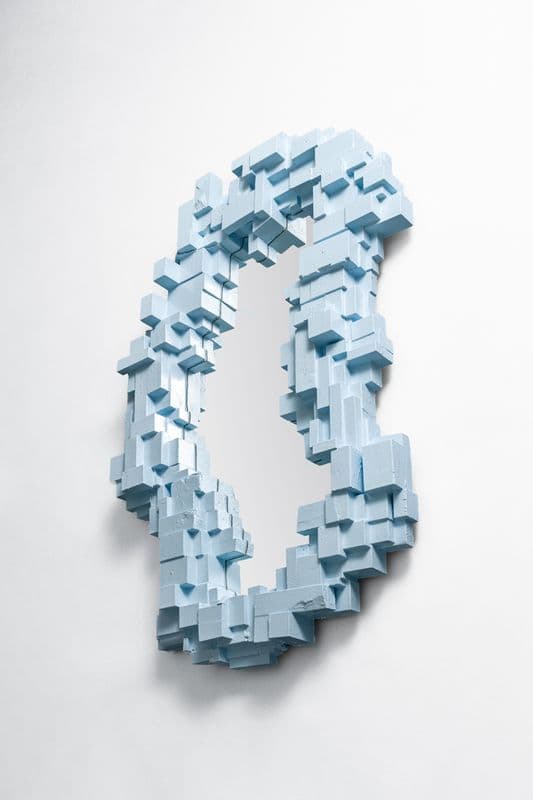
6. Your Craft Punk methodology merges roughness and precision. How do you define quality or completion in a process that is largely guided by improvisation?
For me, quality in the Craft Punk style stems from the concept. The series originated in my 2023 solo show Crafted Potential, where I explored how post-industrial materials—like Fogia’s wood waste—could be reintegrated into furniture production. One of the case studies, Upcycling, produced four vases, a table, and a lounge chair, all using waste wood. That project made me realize how fluid and scalable hand-based, low-tech production could be, even for larger-scale works. Completion is intuitive. I know a piece is finished when it feels visually balanced, structurally sound, and conceptually honest to its origin—wood that would otherwise have been burned for energy. A tree takes 45–120 years to grow; I feel a responsibility to treat it with care, even in its second life.
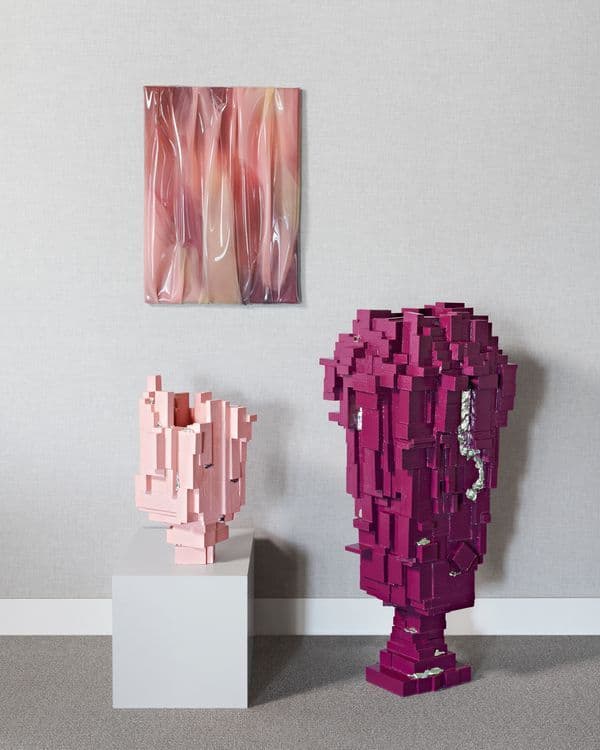
7. Beyond their aesthetic presence, do these works aim to provoke questions about value or permanence in contemporary material culture?
Absolutely. The entire Craft Punk project is about demonstrating that upcycled materials can have artistic value—and not just as a sustainability gimmick. I believe a minimum of 50% of all new furniture should be made from reclaimed materials. We should treat post-use material as a raw resource, not as waste. I also believe the design industry is often too focused on novelty over depth, ignoring sustainable practices that could transform material culture.
I strive to balance narrative, craft, aesthetic experimentation, and environmental accountability—all in one practice. Sometimes it succeeds, sometimes less so—but I make that attempt every single time. I want people to find the work beautiful, understand its narrative, and see the deeper values reflected in its playful yet conceptually grounded finish.

8. Did you conduct any structural testing or stability analysis on the base units—especially given the works’ height and modular construction?
Because I’ve worked extensively with this kind of construction before, I’ve developed a strong and safe base. Even without engineers for formal structural testing, I used my own and others’ weight as a reference when building the base. Each sculpture was designed to be bottom-heavy, with a wide, flat footprint to prevent tipping. I also ensured the measurements fit the pallets for transport, which helped lock the proportions and weight distribution early on.
The agreement with the client was that on-site, they would build podiums much larger than the sculptures to enhance stability and safety for visitors. This collaborative planning made the final installation not only visually impactful but also structurally sound.
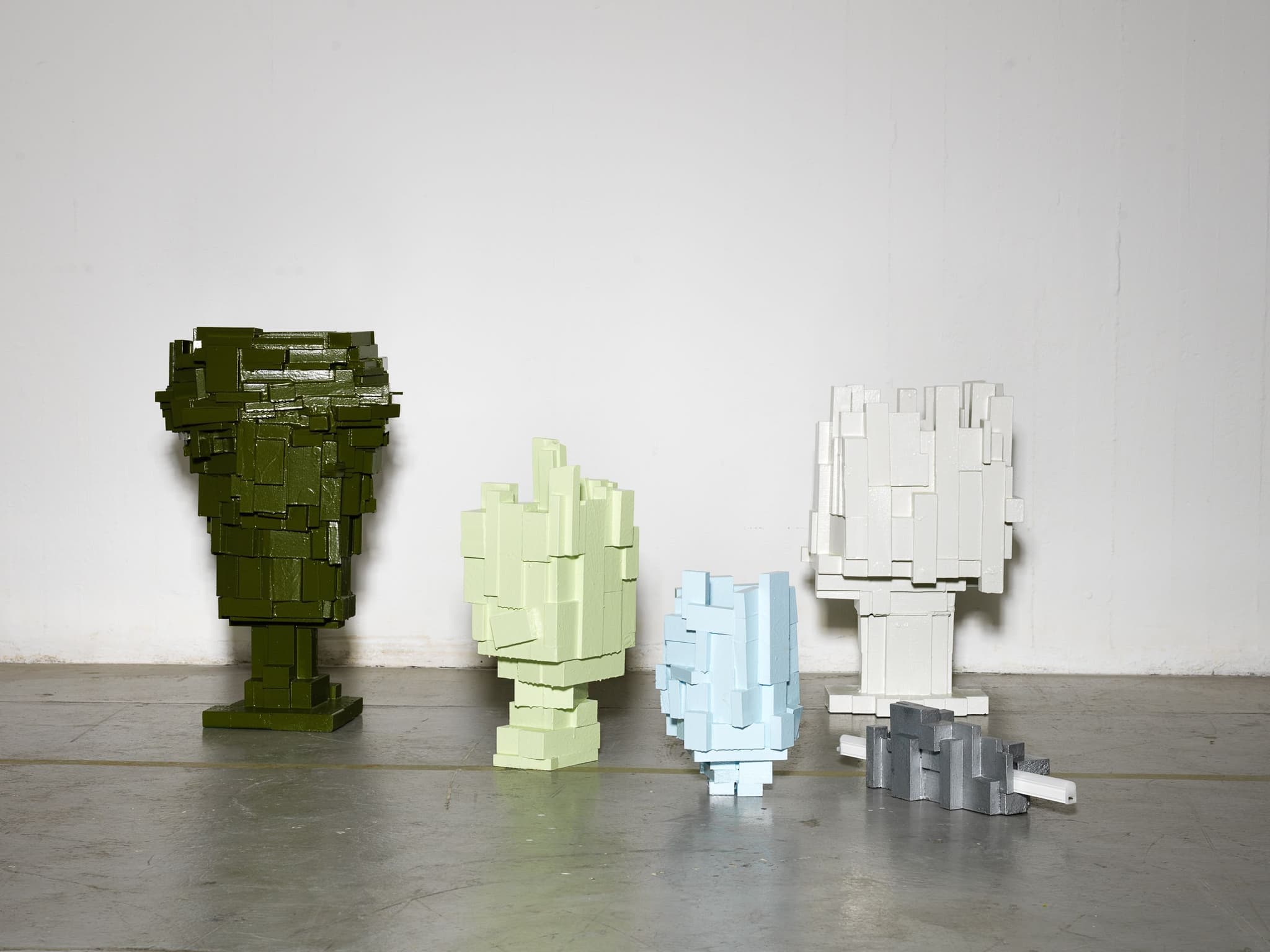
9. What lessons from Craft Punk Sculpt are influencing your current or future material research—particularly in scaling experimental work for public or commercial use?
One of the key takeaways from Craft Punk Sculpt No. 1 and No. 2 was that a process rooted in improvisation, low-tech methods, and local reclaimed materials can indeed be scaled without losing its integrity. It showed me that physical improvisation can still produce reliable, reproducible outcomes and that clients are open to unconventional processes when the narrative and execution are strong.
Going forward, I want to focus my research on creating frameworks where experimentation, sustainability, and narrative coexist—even in public or commercial settings. I envision collaborating with institutions, manufacturers, or architects who are curious about how tactile processes and reclaimed materials can shape the public environments of tomorrow.
Honestly, I just love making things. There’s a childlike joy in shaping something with your hands, turning ideas into physical objects. Even after all these years, it’s still the best creative kick I know.
